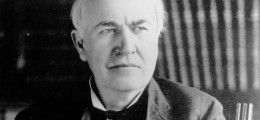“Why do I stand up here? I stand upon my desk to remind myself that we must constantly look at things in a different way. You see the world looks very different up here … Just when you think you know something, you have to look at it in another way. Even though it may seem silly or wrong, you must try.” – Robin Williams, Dead Poets Society (1989)
Getting teams to look at processes in a different way can be both one of the biggest challenges and fruitful exercises a leader can undertake. Merely enabling people to see their job from a fresh perspective can lead to new insights and generate a rush of improvement ideas. Taichii Ohno (founder of the Toyota Production System) was famous for requiring leaders to spend hours standing in a circle on the shop floor and observing a process until the waste “revealed itself.” The problem with getting people to look at their process and see the opportunities for improvement is that our brains are hardwired to see the world the way we want to see it rather than the way it is. So in order to get teams to see their process differently, you often need to force a change in scenery.
That being said, the following are two simple techniques we use when redesigning systems that challenge teams to look at their process from a new perspective and expose problems in real time:
Break the work – “artificially” breaking up the work can be very effective way to increase collaboration by adding immediate feedback loops. As teams redistribute work and struggle to meet their goals, the increased interactions generate insightful questions regarding individual behaviors, standard work requirements, and single points of failure in the system.
Rotate the work – frequently rotating the work can be helpful in two ways. First, changing roles in a process allows the team to systematically and frequently “bring in a fresh set of eyes.” Second, forcing the team to break down the job into its simplest elements and cross train helps drive innovation as they must question every detail and look for ways to translate and train the work more effectively.
Finally, in addition to designing systems which expose new opportunities, remember the power of setting a goal for ideas. Paul Cook once noted that “To be an innovative organization, you have to ask for innovation. You assemble a group of talented people who are eager to do new things and put them in an environment where innovation is expected. It’s that simple…” When Robin Williams challenges his students to think differently, he does not merely suggest everyone stand on the desk and look at the world from a different perspective…he makes everyone get out of their seat and physically stand on his desk. The same is true for innovation. Don’t beat around the bush with your goal for getting new ideas. Contrary to what some leaders believe, setting challenging expectations for the number of new ideas generated and implemented can lead to increased motivation, fresh insights and improved business results.




Leave a Reply